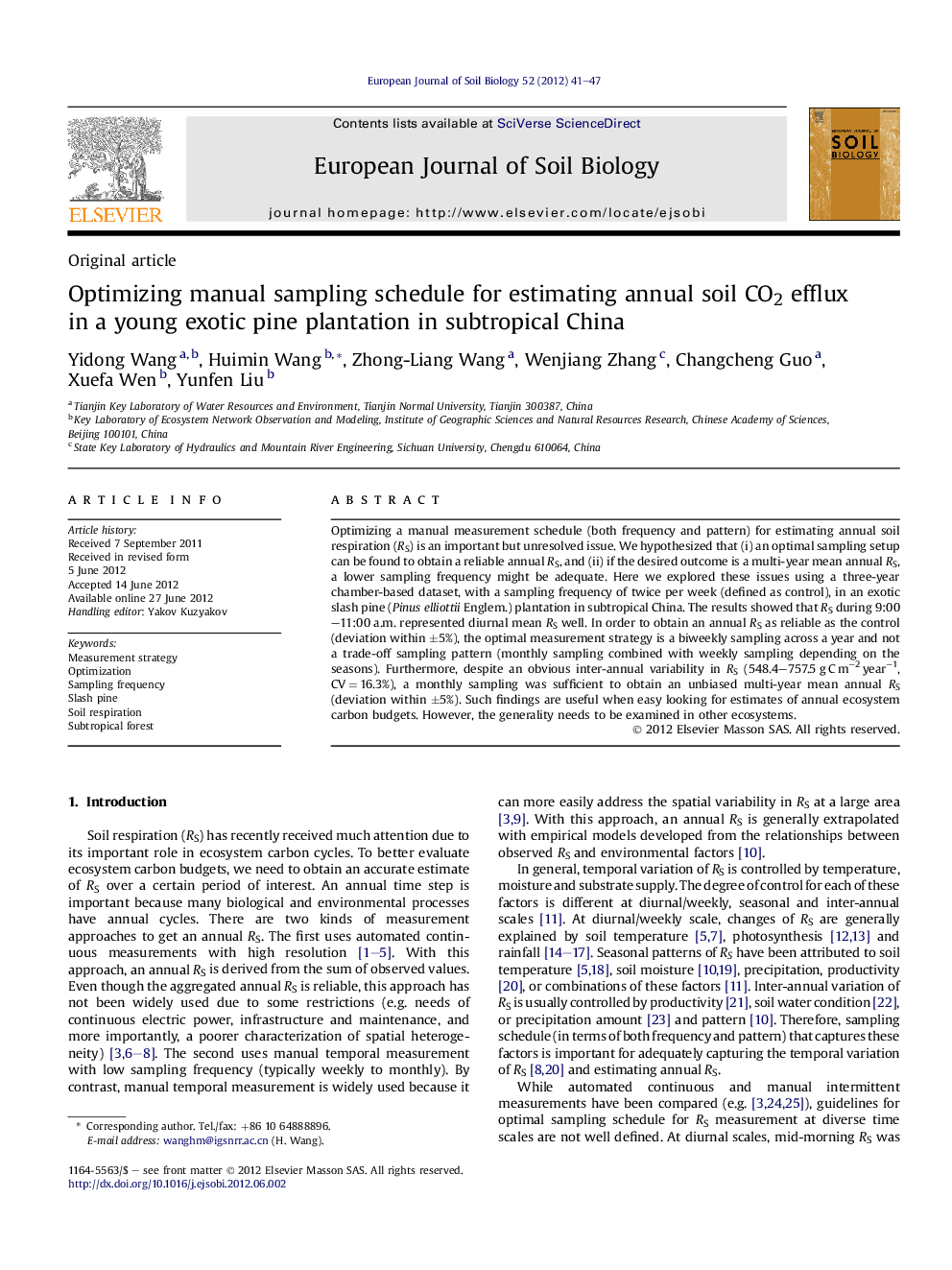| کد مقاله | کد نشریه | سال انتشار | مقاله انگلیسی | نسخه تمام متن |
|---|---|---|---|---|
| 4392058 | 1618140 | 2012 | 7 صفحه PDF | دانلود رایگان |

Optimizing a manual measurement schedule (both frequency and pattern) for estimating annual soil respiration (RS) is an important but unresolved issue. We hypothesized that (i) an optimal sampling setup can be found to obtain a reliable annual RS, and (ii) if the desired outcome is a multi-year mean annual RS, a lower sampling frequency might be adequate. Here we explored these issues using a three-year chamber-based dataset, with a sampling frequency of twice per week (defined as control), in an exotic slash pine (Pinus elliottii Englem.) plantation in subtropical China. The results showed that RS during 9:00–11:00 a.m. represented diurnal mean RS well. In order to obtain an annual RS as reliable as the control (deviation within ±5%), the optimal measurement strategy is a biweekly sampling across a year and not a trade-off sampling pattern (monthly sampling combined with weekly sampling depending on the seasons). Furthermore, despite an obvious inter-annual variability in RS (548.4–757.5 g C m−2 year−1, CV = 16.3%), a monthly sampling was sufficient to obtain an unbiased multi-year mean annual RS (deviation within ±5%). Such findings are useful when easy looking for estimates of annual ecosystem carbon budgets. However, the generality needs to be examined in other ecosystems.
► Optimizing sampling setup for estimating annual soil CO2 flux is important but scarce.
► Biweekly sampling frequency is optimal to obtain a reliable annual soil respiration (±5%).
► However, despite similar sampling size, a trade-off sampling pattern can not qualify.
► Monthly measurement is adequate to obtain a three-year mean annual soil respiration.
Journal: European Journal of Soil Biology - Volume 52, September–October 2012, Pages 41–47